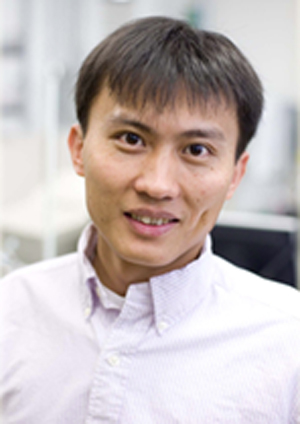Yi Cui Develops Transparent Batteries
Stanford professor Yi Cui has developed a transparent battery to improve the aesthetics of consumer electronics.
Stanford materials science professor Yi Cui has developed a technique to make transparent batteries, clearing the last big hurdle to a quantum aesthetic leap in the design of devices like cell phones and LCD displays.
Cui’s objective is to make batteries “more beautiful and fancier” because “if you can’t make the battery transparent, you can’t make the gadget transparent,” he says. On such aesthetic considerations turn the fortunes of global consumer electronics giants like Samsung, Nokia, Blackberry, LG and others. That’s why researchers have already devoted major efforts to make components like circuitry and transistors transparent, but only Cui has undertaken the seemingly impossible task of making batteries transparent.
That’s because the capacity of electrodes — which so far have been limited to non-transparent metallic materials — depend on their ability to store electricity, which in turn depends on their total mass. That limits the potential of the most obvious strategy of trying to make them ultra-thin.
Cui has gotten around that limitation by developing an ultra-fine mesh structure whose filaments are too thin to be discerned by the naked eye but whose total volume is high enough to store useful amounts of energy. The filaments of Cui’s mesh are on the order of 50 micrometers thick, virtually invisible.
His team used lithography on a slice of silicon wafer to create a mold for the mesh material. Liquid polydimethylsiloxane (PDMS) — a widely-used silicon-based organic polymer — is poured over the mold, then cured to harden it. After it is peeled off the mold the PDMS sheet is engraved with a grid of narrow channels. A solution of electrode standard lithium-ion battery material is dripped onto the PDMS, relying on capillary action to fill all the channels to create the ultra-fine mesh invisible to the naked eye.
The battery is formed by sandwiching a clear gel electrolyte between the two electrodes. The device is placed inside a clear plastic wrapping for protection of the components and the user. Cui and his team have placed the prototype of the transparent battery over an LED so that its light shines through the battery.
Cui’s team has managed to store 20 watt-hours per liter, about as much energy as a nickel-cadmium battery or about half that of an equivalent opaque battery. Cui plans to boost the energy density by a full order of magnitude over time by thinning the PDMS substrate and by deepening the trenches holding the electrode material.
The transparent battery is only the latest of Cui’s work with batteries and materials on the nano scale. In March his startup Amprius raised $25 million to commercialize Cui’s breakthrough in using silicon nano-wires to boost the efficiency of lithium-ion batteries.
Yi Cui graduated from China’s University of Science and Technology in 1998. He moved to the U.S. to study at Harvard and obtained his PhD in chemistry there in 2002. He completed a two-year postdoctoral research project on electronics and colloidal nanocrystals at the University of California, Berkeley from 2003 to 2005. He then joined the Stanford University faculty as an assistant professor in the department of materials science and engineering. In 2010 he was elevated to the status of an associate professor. In 2011 was was appointed to the Photon Science Faculty at the SLAC National Accelerator Laboratory.

Stanford professor Yi Cui is a star in the world of nano-particle and super-efficient battery research.

